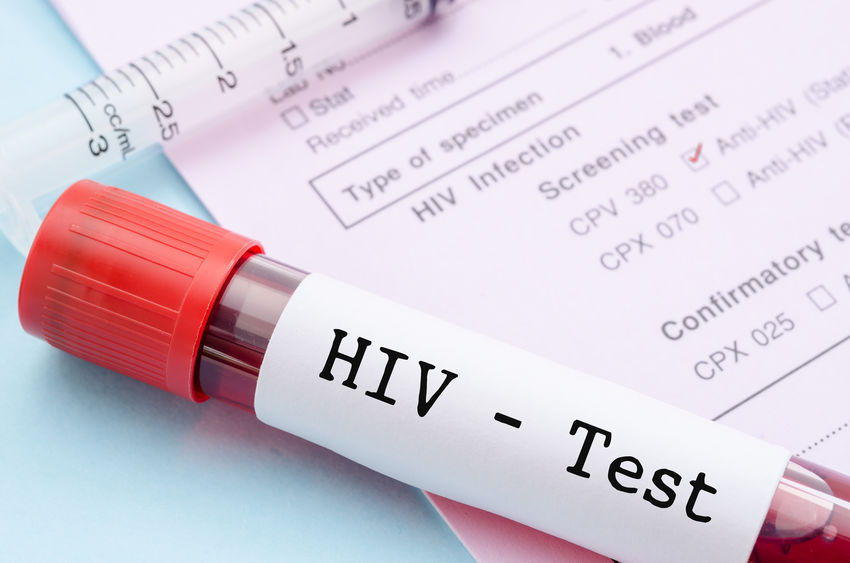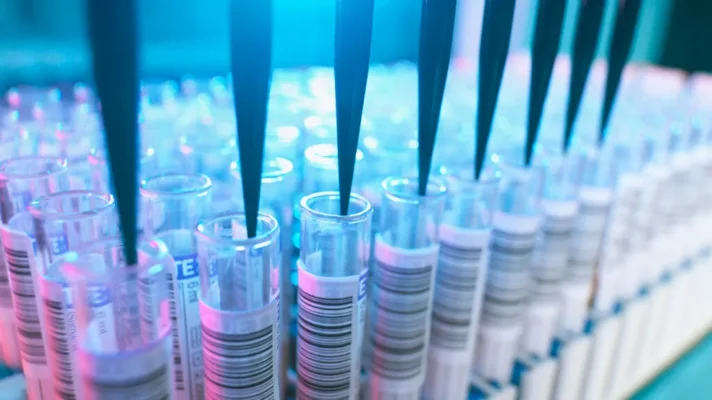HIV
What Is The Difference Between Cure HIV and AIDS?
What Is HIV?
HIV stands for Human Immunodeficiency Virus. HIV is the virus that causes AIDS.
Your immune system is your body’s defense system. While the immune system can control many viruses, HIV targets and infects the same immune system cells that protect us from germs and illnesses. These cells are a type of white blood cell call CD4 cells (sometimes call T cells).
Without medication to control the virus, HIV usually takes over CD4 cells and turns them into factories that produce millions of copies of the virus. As the virus makes copies, it damages or kills the CD4 cells, weakening the immune system. This is how HIV causes AIDS.
There are many different strains of HIV that are group into two main types:
HIV-1: Most common type worldwide
HIV-2: Found mostly in West Africa, Asia, and Europe
It is possible for one person living with HIV to carry several different strains of HIV in their body at the same time.
What Is AIDS?
AIDS stands for Acquired Immune Deficiency Syndrome. AIDS is the most advanced stage of HIV disease.
HIV causes AIDS by attacking CD4 cells, which the immune system uses to protect the body from disease. When the immune system loses too many CD4 cells, you are less able to fight off infections and can develop serious, often deadly, infections. These are call opportunistic infections (OIs).
When someone dies of AIDS, death is usually due to OIs or other long-term effects of HIV. AIDS refers to the weakened state of the body’s immune system, which can no longer stop opportunistic infections.
What Is the Difference Between HIV and AIDS?
You do not have AIDS as soon as you acquire HIV. You can live with HIV (be HIV+) for many years with no signs of disease, or only mild-to-moderate symptoms. People living with HIV and taking HIV drugs as prescribed have a very low risk of progressing to AIDS. But without treatment, HIV will eventually wear down the immune system in most people to the point where they have few CD4 cells and develop opportunistic infections.
The definition of AIDS was establish before there was effective treatment for HIV. It indicated that a person was at higher risk for illness or death. In countries where HIV treatment is readily available, AIDS is no longer as relevant as it once was.
This is so because with access to effective HIV treatment, people can stay healthier even at low CD4 counts. Also, someone could have received an AIDS diagnosis years ago, but their immune system has recovered since then. They may still have that diagnosis, but no longer have a low CD4 count.
The US Centers for Disease Control and Prevention (CDC) identifies someone as having AIDS if she or he is living with HIV and has one or both of these conditions:
- At least one AIDS-defining condition (see our list of AIDS-Defining Conditions)
- A CD4 cell count of 200 cells or less (a normal CD4 count is about 500 to 1,500)
- People with AIDS can rebuild their immune system with the help of HIV drugs and live a long, healthy life. Even if your CD4 cell count goes back above 200 or an OI is successfully treated, you may still have a diagnosis of AIDS. This does not necessarily mean you are sick or will get sick in the future. It is just the way the public health system counts the number of people who have had advanced HIV disease.
How Do I Know If I Have HIV?
Most people cannot tell that they have been exposed to, or have acquired, HIV. Initial, or acute, symptoms of HIV infection may show up within two to four weeks of exposure to HIV, and can include:
- Fever
- Swollen glands
- Sore throat
- Night sweats
- Muscle aches
- Headache
- Extreme tiredness
- Rash
Some people do not have any symptoms or do not notice the symptoms because they are mild, or they think they have a cold or the flu. After these “flu-like” symptoms disappear, people living with HIV can go for years without showing any symptoms. The only way to know for sure if you are living with HIV is to take an HIV test.
If you have some of the initial or acute symptoms of HIV, it is important that you be test for HIV antigen (not just HIV antibody). Antigens are pieces of the HIV virus, or viral particles. If an HIV antigen is in your blood, tests can identify HIV acquisition as soon as two weeks after you have been expose to the virus.
Antibodies are proteins that your body makes to mark HIV for destruction by your immune system. The body takes one to three months and occasionally up to six months to develop these antibodies. This three- to six-month period between acquiring HIV and the production of antibodies is called the “window period.” Therefore, tests that detect antibodies are only reliable one to three months after you have been exposed to HIV.

Do I Need to Get Tested for HIV?
The CDC estimates that about 15 percent of people living with HIV in the US do not know that they live with the virus. Many of these people look and feel healthy and do not think they are at risk. But the truth is that anyone of any age, gender, race, ethnicity, sexual orientation, social group, or economic class can acquire HIV. Humans may discriminate on the basis of these factors, but the virus does not. For more on how HIV is spread, see our fact sheet on HIV transmission.
To see if you need to get tested for HIV, answer the following questions:
- Have you ever had a penis inserted into your vagina or anus (“butt”), or oral sex without a condom or other latex barrier (e.g., dental dam)? Note: oral sex is a low-risk activity. Vaginal and anal sex are much higher risk.
- Do you not know your partner’s HIV status or is your partner living with HIV?
- Are you pregnant or considering becoming pregnant?
- Have you ever had a sexually transmitted infection or disease (STI or STD)?
- Do you have hepatitis C (HCV)?
- Have you ever shared needles, syringes, or other equipment to inject drugs (including steroids or hormones)?
If you answered yes to any of these questions, you should definitely get an HIV test. In the US, everyone between 13-64 years old should be screen for HIV at least once.
Why Should I Get Test?
If you are worrie because you think you may have been expose to HIV, get test. Then, if you learn you are HIV-negative, you can stop worrying. You can also consider taking pre-exposure prophylaxis (PrEP) or post-exposure prophylaxis (PEP).
PrEP means taking an HIV drug before being exposed to HIV, to prevent yourself from getting it, similar to taking birth control pills to prevent pregnancy. PEP means taking HIV drugs for about a month immediately after possible exposure to HIV, to prevent HIV acquisition.
If you test HIV+, there are effective medications to help you stay healthy. These medications are also part of HIV prevention. When a person living with HIV is taking HIV drugs and their viral load (amount of HIV in their blood) has reached undetectable levels (not enough HIV in their bloodstream for a test to measure) for more than six months, that person cannot sexually transmit HIV to a partner who is HIV-negative.
But you cannot get the health care and treatment you need if you do not know your HIV status (whether you are living with HIV or are HIV-negative). If you don’t know your status, you could also pass HIV to others without knowing it.
For women who plan to become pregnant, testing is especially important. If a woman is living with HIV, medical care and certain HIV drugs taken during pregnancy can lower the chance of passing HIV to her baby. For more information, see our fact sheet on Pregnancy and HIV.
In the US, you can go to your primary care doctor and request a test or to the National HIV, STD and Hepatitis Testing website or the HIV.gov website to find a testing location near you.
You can also call the CDC’s information line at 800-232-4636 or call your state’s HIV/AIDS hotline (numbers listed here). For more on getting test for HIV — types of tests, how they work, and where to get them — see our fact sheet on HIV Testing.
How Is HIV Spread?
HIV is spread primarily through contact with the following body fluids:
- Blood (including menstrual blood)
- Semen (“cum”) and other male sexual fluids (“pre-cum”)
- Vaginal fluids
- Breast milk
For people living with HIV, taking HIV drugs and reducing their viral load makes these fluids far less likely to transmit HIV to others. This is call HIV treatment as prevention. If a person living with HIV takes HIV drugs and maintains an undetectable viral load for more than six months, their semen or vaginal fluids will not pass HIV on to their sexual partner.
The most common ways HIV is spread from person to person is through unprotect sex (no condoms, other barriers, or treatment-as-prevention methods used), sharing needles use for injecting drugs, hormones or steroids, and mother to child (during pregnancy, birth, or breast-feeding).
HIV is not spread through contact with these body fluids:
- Sweat
- Tears
- Saliva (spit)
- Feces (poop)
- Urine (pee)
In other words, you CANNOT get HIV by touching or hugging someone who is living with HIV, kissing someone living with HIV, or by using a toilet also used by someone living with HIV.
Is There a Vaccine or Cure for HIV?
There is neither a vaccine nor a cure for HIV. The best way to prevent HIV is to use prevention methods every time, including safer sex (choosing low- or no-risk activities, using condoms, taking HIV drugs if you are living with HIV, or PrEP if you are HIV-negative), and using sterile needles (for drugs, hormones or tattoos). For more information, see our fact sheet on HIV Vaccines.
More Information:
abamune l tablet
entavir 1 mg
lamivir hbv 100 mg
dinex ec 250





This article serves as a valuable resource for anyone seeking clarification on the terminology surrounding HIV and AIDS. The comparison between a cure and managing symptoms highlights the ongoing efforts in the medical field.
Wow, this article really cleared up some misconceptions I had about HIV and AIDS. It’s crucial to understand the difference for better awareness and prevention.
This article highlights the importance of early detection and treatment of HIV. It’s inspiring to see how medical science has evolved to provide better care for those living with HIV/AIDS. Education is key!
This article served as a great reminder of the progress we’ve made in understanding and treating HIV/AIDS, but also the work that still needs to be done in terms of prevention, education, and support for those affected by the virus.
This article serves as a reminder of the resilience and strength of those living with HIV/AIDS. It’s a testament to their courage and determination in the face of adversity.